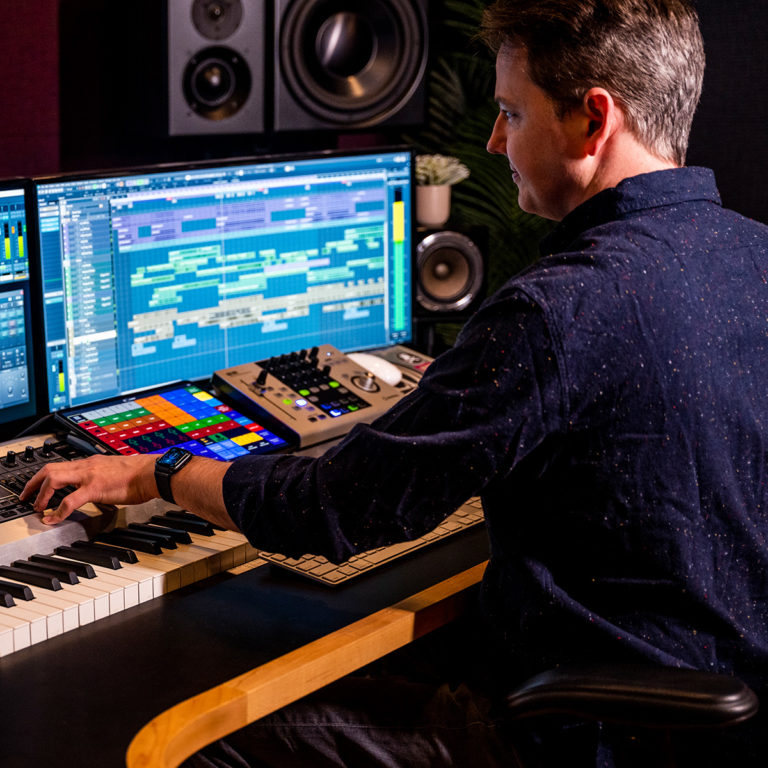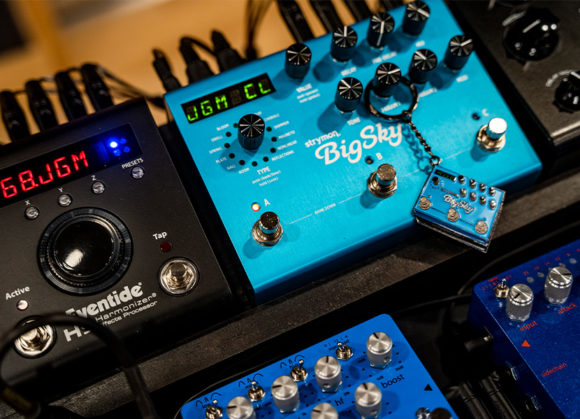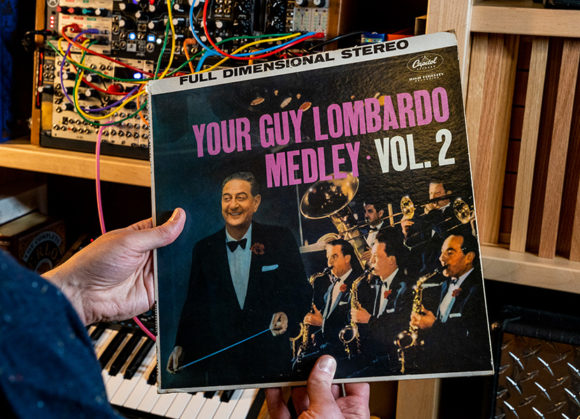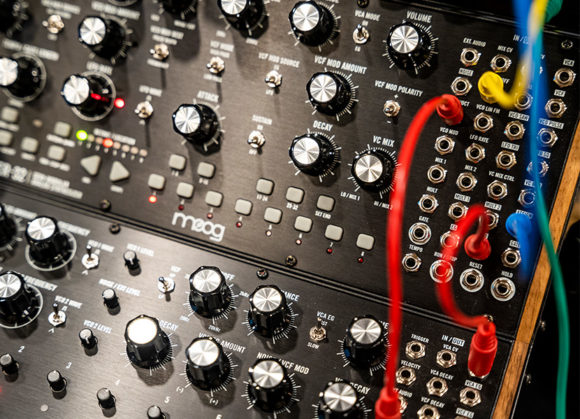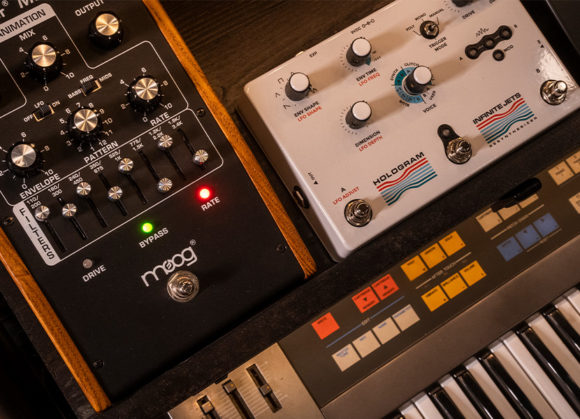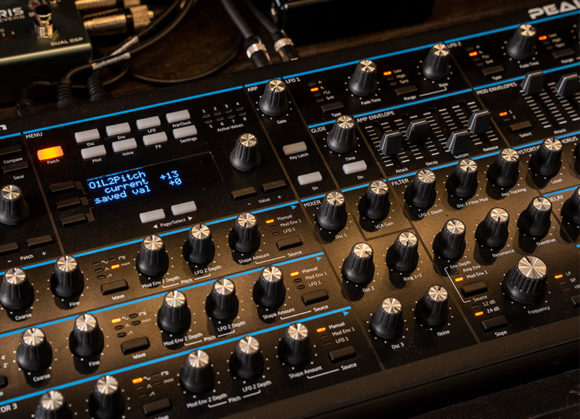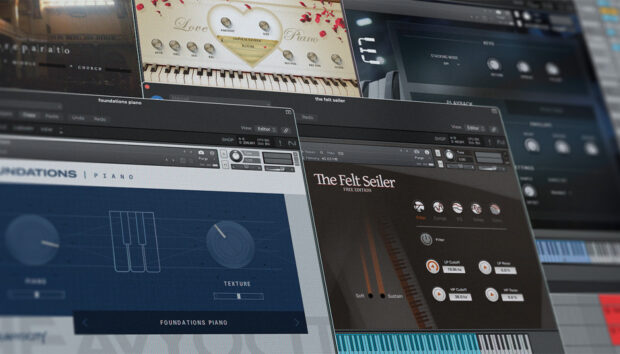Renowned for his innovative approach to orchestration and cinematic narratives for games including The Dark Pictures Anthology, Moss, Tomb Raider, Far Cry Primal, Until Dawn, The Order: 1886 and Dead Space, BAFTA-winning composer Jason Graves has carved a truly diverse and innovative repertoire of computer game scores.
As a classically trained composer and world percussionist, the veteran composer’s love of musicianship and aleatoric composition enables him to utilise a surfeit of instruments from which to create his uniquely evocative and tension-packed soundscapes, with KONTAKT being a key weapon in his creative armoury.
We caught up with Jason in his newly built Raleigh, North Carolina home studio to find out more about his unique approach to the art of scoring videogames.
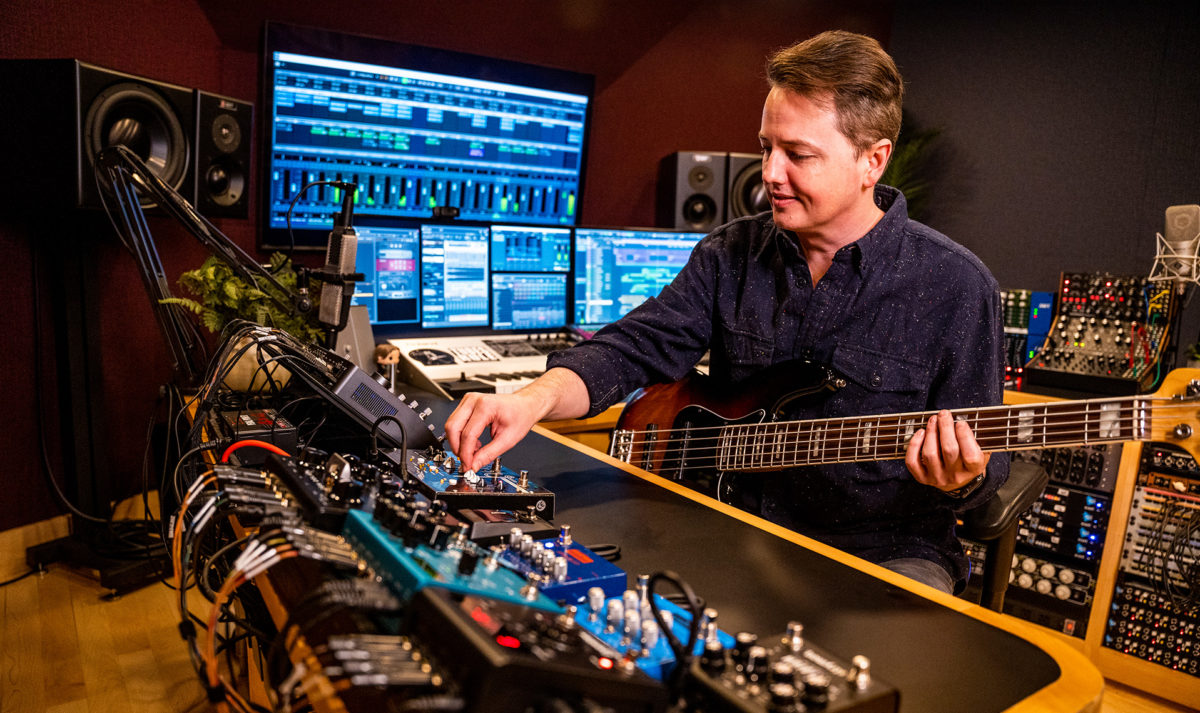
What sparked your interest in wanting to compose music for games as opposed to more traditional forms of music?
Like a lot of other folk, I just loved music. Through middle school and high school I took any lesson my schedule could manage, whether playing piano, guitar or percussion. I taught myself bass in college, played drums in a rock band and keys in a blues band before I was 20, and at college I was in a bunch of world music ensembles from Celtic and middle-eastern to steel bands. That’s basically what my studio looks like now with instruments from all over the world, so I’m essentially doing what I was doing in high school but getting paid for it.
As part of your degree programme at University of Southern California, you studied under some of the world’s most renowned soundtrack composers…
The university has a very prestigious film scoring programme, so to be able to study and learn from people like Jerry Goldsmith, Elmer Bernstein and Christopher Young was priceless. I was actually working on a video game adaptation of Wild Wild West, originally scored by Elmer, so I called his wife and it turned it out they were having a recording session the following week. She invited me to the session and I was able to get my hands on the conductor score to better implement the music into the game. I sat with Berry Levinson to discuss life and music and we rated all the different takes that Elmer was conducting. It was a surreal day but a wonderful memory that I’ll never forget.
You didn’t feel the need to move to LA where so many soundtrack composers are based?
I did move to LA for a couple of years, but although the work I was doing was for some pretty big names and projects it was completely unfulfilling. I was at the bottom of the totem pole and it became about copying this or copying that. I saw the indie film scene in North Carolina as an opportunity to spread my wings and find my own voice. Five years after working in LA, I moved back to Raleigh and discovered video games, which enabled me to be as original as I wanted. Instead of being told what to do, I was given allowance to have more creative input.
You’ve not long finished building a new home studio. What can you tell us about that process?
I built my first studio when I lived in downtown Raleigh and worked there for 10 years, but as my kids got older and downtown grew around us we thought it was time to move a little outside the city. We’re in the country now on 30 acres of woods and the only thing I miss about big city life was my old, custom-built studio, which was amazing but a little small. I do a lot of instrument performance and recording myself, so I needed to have a big enough room for lots of instruments and computer screens with the ability to hit record and have everything soundproofed. When I found the right moment, I decided to build the studio in our new house, which meant working out of the spare bedroom for three years.
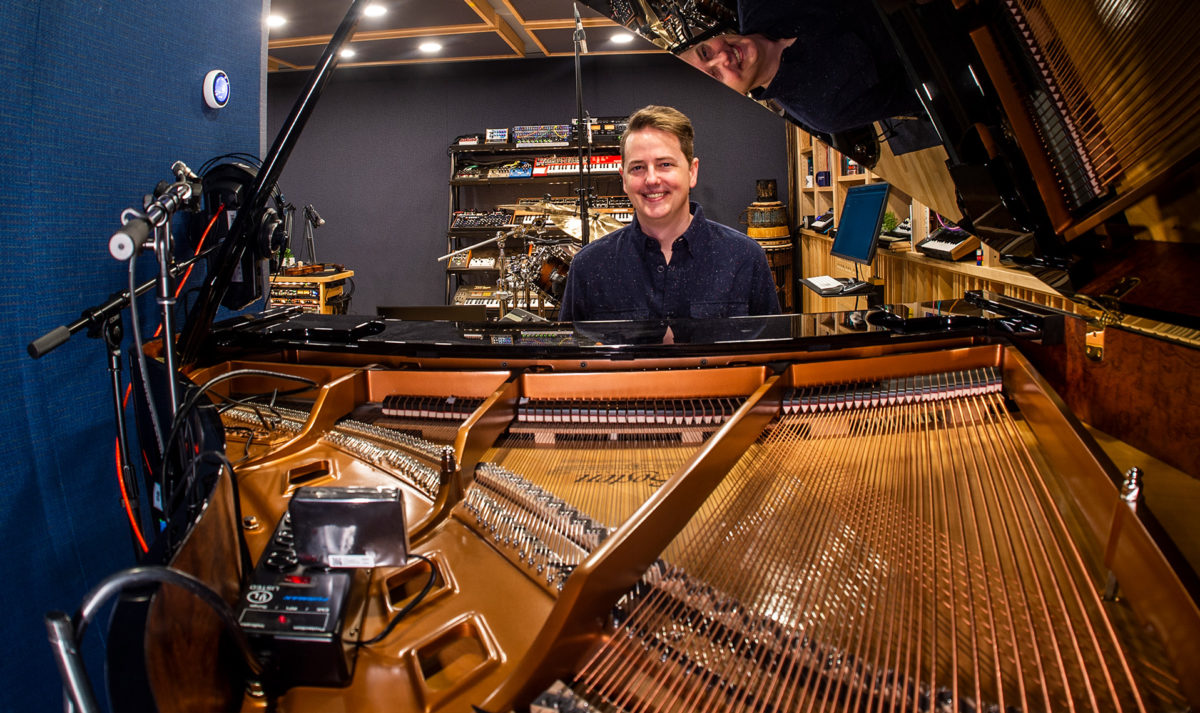
While in-between studios did you learn much about the pros and cons of outboard versus computer processing?
I learned a little of what I’d already proven to myself in the old studio; that outboard or expensive gear doesn’t make you any better. There’s definitely some magical mojo going on with an external guitar pedal or tube EQ, but it takes a little longer because you have the problem of audio routing and lots of crazy patching. I’ve got 64 ins and outs on my main system to facilitate all the external mics, effects pedals and keyboards, but if I have to turn something around really quickly I won’t use them as the computer is obviously faster when it comes to pulling something up and having all your VST instances of Kontakt load properly and your Massive libraries come up exactly as you tweaked them.
What tends to get you excited when considering a potential score?
I literally had a meeting with a games developer yesterday and had this exact discussion. He asked what would excite me about doing the score and I told him it was about trying something different from what I’d done before. If I’m half terrified and half excited I know I’m in the right place for fertile creativity. I’ve probably made horror music the most, but every plot gives you the creative freedom to find a new way to come up with music that scares the listener or the player.
How necessary is it to indulge in gaming in order to create a successful score?
I know some games composers who are obsessed with playing games and more power to them because knowledge is power and the more you play the more familiar you are with how the music’s working. There are people who have written music to big games for Sony and EA that admitted to not playing them, but in those instances the developers and publishers will help to get the music written and implement it themselves. As a composer I think it’s always best to be educated about how your music is being implemented into a game, because that’s ultimately how everyone is going to be experiencing it.
Was your use of Native Instruments tools a revelation or something you graduated towards?
I was using all of the Native Instruments stuff back when you had to buy the box in the music store and type the serial number in, including Absynth when that came out on CD ROM. I can’t remember what the original Kontakt was called, but I started really digging into it and recording my own instruments around 2005. Since then, I’ve essentially become obsessed with using Kontakt to sample my own orchestras, including strings, brass, woodwinds and all kinds of weird and traditional sounds for games, film and TV.
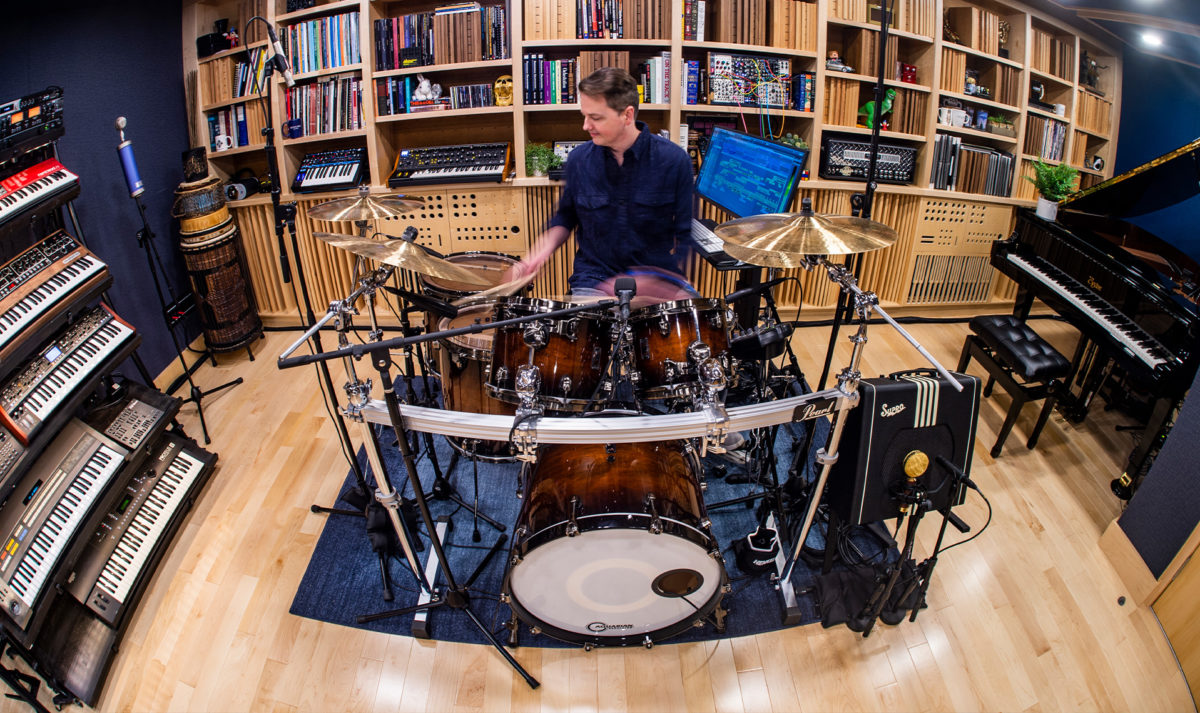
At the inception of a project, will you look to build a suitable library of sounds?
Usually, I like to write some sort of suite of music for a project, which might start off as a simple 60-to-90-second idea of the main theme but ultimately ends up being anywhere between 6 and 12 minutes in length. Through writing that and sharing it with whoever it is I’m collaborating with, I’m sound mining as I go. That literally entails walking around my room and trying to find some interesting instruments to use or figuring out what sort of sound design I want. A lot of times I do experiments with my modular setup, which is used as an effects box, record stuff into Kontakt and play around with it in different ways. I even did an experiment for a game a couple of years ago where I had my daughter sing some silly ghost noises. I put them in Kontakt, pitched them down and put on a really long reverb. If you drop a sound down four octaves it sounds terrifying, so I do lots of stuff like that using existing sounds that have a direct line back to whatever project I’m working on.
How are you looking to create an element of differentiation within your orchestral patches?
Over an 8 to 10-year period, I was lucky enough to record a lot of live orchestra for projects and it got to a point where I could close my eyes and know what the orchestra would sound like when I was doing the mock-up MIDI parts. But the MIDI never really did it justice because the patches always started the same way or you could always hear a little loop here or there. To challenge that, I would use Kontakt to create lots of random start times using different groups of instruments with each one having a different set of rules. For example, the first violin, second violin and viola would all have random start times but the same gestures so that every time you hit a key it would sound like a live string ensemble sitting in front of you that is literally doing something different every time. That made the music sound more human and less predictable, which is exactly what I’m trying to achieve.
What methods do you employ to avoid a loop sounding like a loop?
Although I don’t like loops, I can’t have something just randomly stop so I’ll create really long 20-second loops with three sounds all playing the same thing. They loop, but they also have different loop points and you never hear the loops because they’re covering each other up. If you combine that with random start times, record them at different volumes and use the mod wheel to change the dynamic, it’s going to sound like a live performance. It’s very simple actually, but it takes a lot planning to set up and get it to play back the way I heard it in my head.
Are you looking for the technology to emulate a live orchestra so that you don’t necessarily need to use one?
People ask me about that all the time, but that’s not something I’m interested in doing. The reason I’m building these tools in Kontakt isn’t so I don’t have to hire live musicians, it’s coming from a purely interactive game music perspective where I can put these individual elements into a game engine using a live orchestra to record those original sessions. I sort of equate it to computer graphics where you sometimes see a CGI version of a person that lives in an uncanny valley. If you weren’t looking directly at the screen you might not notice, but as soon as you start to pay close attention something looks weird and you’re not sure why. With orchestras, the computer is never going to be able to inject the passion of 90 living, breathing musicians, but the benefit is that whether the music is playing in the background or at the forefront of a game or film, the audience is always looking at visual data, which allows their brain to accept a little more MIDI.
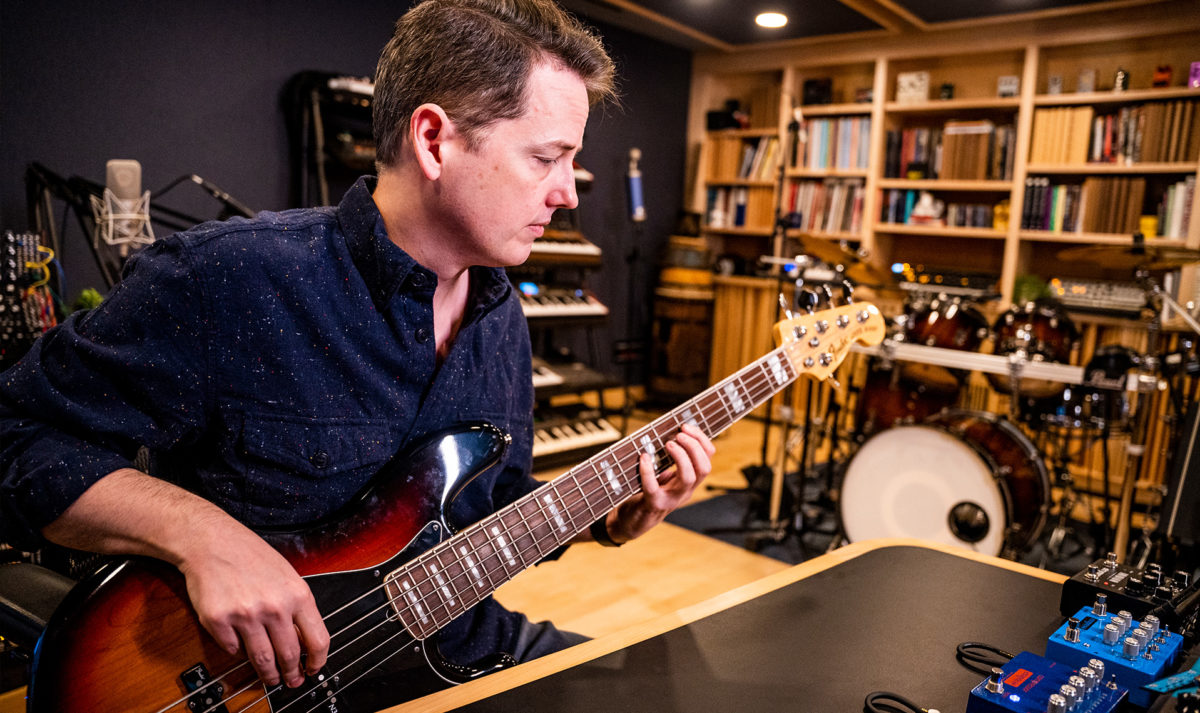
With film you have linear video to write to. I’m assuming gaming is more complicated as there are choice-based actions and you’re not writing to a standard sequence of events?
It’s definitely a lot more complicated with games, but those complications also allow for a lot more freedom. A lot of the time I’ll write a 5-6 minute piece of music for a game that you would think was written for a film because it will start, stop, build and plateau, and in my head I’m scoring the game as if it were an action cue. The trick is being able to disassemble that music and send it to the developer so they can make the music play back in sync with the game. There are a lot of behind the scenes tricks going on to keep the music in a constant state of checking with the gameplay in terms of when the music needs to get louder or quieter, and that’s the complicated part. In terms of viewing the game on-screen while I’m writing, I’ll either have a game developer’s kit that allows me to play the game or a number of 20-minute long captures of someone at the studio playing it for me that I can throw into my DAW and have looping in the background.
How do you tend to approach the mock-up process for a game score?
If I know I have a budget for a live orchestra I’ll definitely spend less time on the mock-up, but I remember working on a game that had a live budget and after I sent in the first 10 or 15 minutes of music they thought the mock-up sounded so good that they struck the live budget [laughs]. Over the past five or six years I’ve tried to steer my clients away from using a MIDI orchestra towards other instruments that are just as interesting, but whether I’m using soloists, synthesizers or playing a bunch of things, everything’s based on live performance.
How far will you venture into using found sounds or authentic percussion to create unique custom instruments?
I’m always trying to push myself more than I did before. Especially now with technology and computers being as powerful as they are, with Kontakt you can record yourself on an iPhone making sounds or playing textures on practically any instrument. I’ve done a lot of YouTube videos on my channel talking about that exact thing. I’m not a string player, but instead I’ll use very inexpensive string instruments that I’ve order from Amazon. I literally did a real-time Kontakt tutorial showing me playing some notes on a cello and putting them into Kontakt to see what happens and it didn’t sound like a single composer playing a cello in his master bedroom but a 14-string ensemble. What I love about that is that no one else will have that sound because I played it, built it and performed it in Kontakt myself. The power of the technology is that it enables new and young composers to find interesting and unique sounds that will help them carve out their own musical identity.
What about for the more ‘supernatural’ sounds?
When I’m trying to find something especially abstract or supernatural, I’m typically walking around the studio, my house or outside and searching for sonic inspiration. A lot of times I’ll end up using a non-instrument – something as silly-sounding as a metal trash can lid or some leftover fencing from our chicken coop. I actually bowed some chicken fencing with a bass bow and it sounded like the scariest metal shrieking thing you’ve ever heard. If you put that into Kontakt, drop it down a couple of octaves, double it up and add some delay and reverb, you’ll end up with a supernatural sound that no one else has.
There’s a track on your Far Cry score called The Fires of Conquest, which has some wonderfully primeval vocal chanting. What did you use to create that?
Far Cry was a very fun score and I worked with an incredible singer named Malukah. I had previously tried to get her to record something for a medieval fantasy soprano alto part, but the direction changed and it fell through. Fast forward six months and I got the chance to work with her again to make all of those blood-curling screeches and screams that you hear on the track. I just sent her some of the drums I’d recorded and asked her to do war cries on top of it. If there are male vocals in there, that’s me chanting and grunting, making all kinds of embarrassing sounds and pitching it down to sound like a ten foot Neanderthal that wants to rip your head off.
Are any other Native Instruments tools integral to your process?
I love Battery for the same reasons that I love Kontakt because you can drop anything you want in there and create your own custom-built drum machine. I also love anything that Heavyocity makes because I’ve been friends with those guys since forever and we’ve even built a couple of Kontakt libraries together. As much as I might talk about using external pedals, guitar amps and tube heads, Guitar Rig is also fantastic for its modulation or cool effects and the ability to use different choruses and flangers with echo and reverb, even on non-guitar instruments like synthesizers. The new version is really flexible and takes another step up in terms of sound, so I’ll often default to that when looking for in-the-box synth sounds.
Do you feel a soundtrack should entirely serve a project or is there room to put your unique stamp on things?
Whether anyone likes it or not, they’re going to have some sort of sound and I feel that due to my background playing drums, keyboards and guitar I’m a very rhythmic-oriented composer. That’s especially useful for writing action or chase music, so no matter what genre or instruments I’m using it probably sounds like me because the root origin is coming from someone who has that mentality.
What have you been working on recently?
I just wrapped up a really big two-hour score for a virtual reality sequel called Moss: Book II, which just released. That was a wonderful game to work on because it’s very melodic, atmospheric and adventurous. I’ve also got an incredibly long soundtrack coming out next month that features over seven hours of ‘80s and ‘90s nostalgic pop music. I’m not allowed to fully announce it yet, but I’m playing drums and keyboards with friends of mine on saxophone and guitar. What I love about making music is being able to genre jump from horror to ‘90s pop to Celtic adventure and then turn around and record a film trailer at somewhere like Abbey Road. All of those projects are completely different but satisfying in their own way.
For more on KONTAKT – from interviews with other composers to how-tos and free instrument downloads – check out the dedicated section here on the blog. You can keep up with Jason and his latest projects over on his website and also via his YouTube channel.








